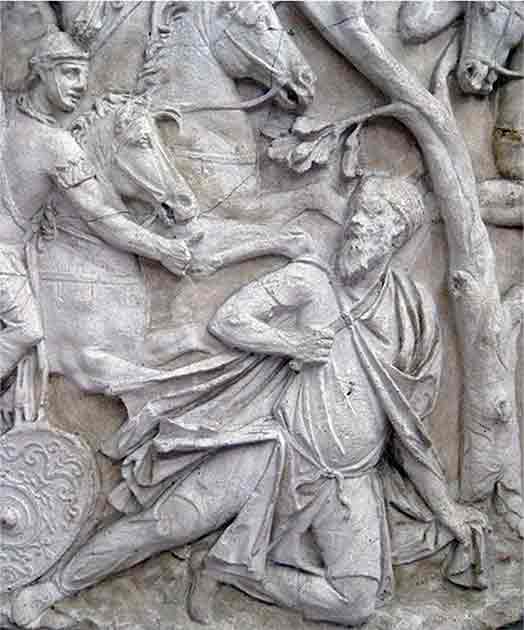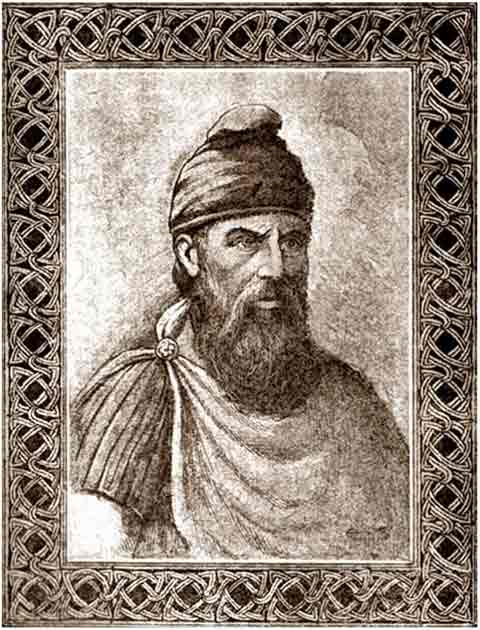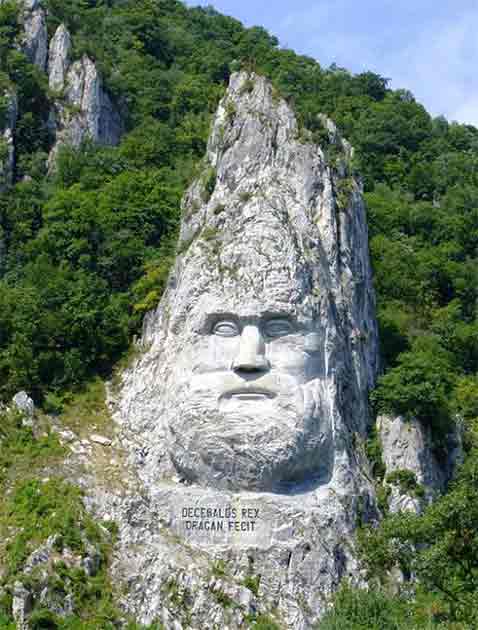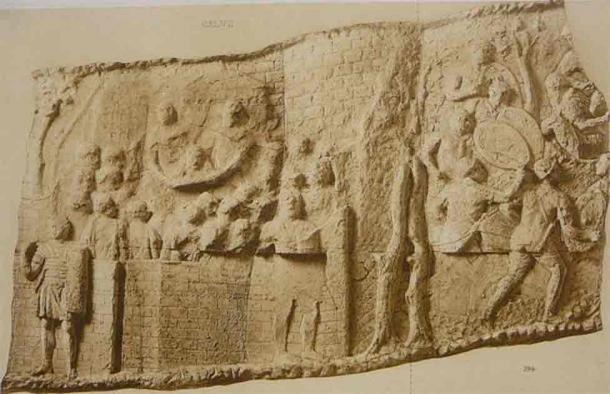🔴 Website 👉 https://u-s-news.com/
Telegram 👉 https://t.me/usnewscom_channel
In the heart of Rome stands a 38-meter tall (124.67ft) tall column built in the 2nd century AD. Carved in low relief spiralling around the monument are over 2600 figures, representing the combatants of wars fought in a distant land. The column is known as Trajan’s Column, and its subject is the Dacian Wars.
Trajan’s Column, Rome (Livioandronico2013/CC BY-SA 4.0)
Decebalus: The Last Stand of a Dacian King
One of the most important figures on the column is Decebalus, the leader of the Dacians, otherwise known as King Decebal. In one scene, he is shown committing suicide after being defeated by the Romans, preferring death over subjugation. Decebalus’ defeat and suicide marked the end of the Second Dacian War, and the absorption of Dacia into the Roman Empire.
The spirit of Decebalus, however, did not die, and has been revived in recent years in Romania, which was once part of the Dacian Kingdom. This is most ostentatiously seen, perhaps, in the colossal rock sculpture of Decebalus’ head.
The suicide of the Dacian King Decebal on the Trajan Column (Harpeam/CC BY-SA 3.0)
Arduous Labor: Crafting Decebalus’s Colossal Head
The project of sculpting the colossal head of Decebalus was the brainchild of a wealthy Romanian businessman, Iosif Constantin Drăgan. In 1985, Drăgan chose the rock to be sculpted, an outcrop 128m (419.94 ft) in height located in the area of Iron Gorge. Perhaps one of the reasons Drăgan chose this site was due to the fact that the Tabula Traiana, a memorial to the Roman conquest of Dacia, was located on the opposite side of the river.
Portrait of Dacian king Decebal. (Public Domain)
Work only began years later in 1993, after the mountain was purchased by Drăgan. The work must have been a challenge for the people involved with the project, who were under the direction of the Italian sculptor Mario Galeotti. Prior to the actual sculpting, numerous other tasks had to be undertaken, from taking samples to determine the quality of the rock to the production of initial sketches. The location of the sculpture also made access difficult, and boats were required to transport the necessary equipment to the workmen. Furthermore, the workmen had to climb from the rock base to the erected scaffolding before they could begin chipping the stone. This was a difficult and dangerous task and is reported to have consumed up to half an hour each day.
Frontal view of the Dececbalus’ Head rock sculpture, located near Danube’s Big Boilers on the border between Serbia and Romania. (Yanko Malinov/CC BY-SA 4.0)
For the next ten years, the workmen worked for six hours a day in two shifts from March to October. Using dynamite, larger chunks of rock were blown apart, whilst the finer work was done using pneumatic-hammers and pickaxes.
For the first six years, the basic outline of the sculpture was produced. After that, another four years were spent working on the finishing touches and minor details. In 2000, the commemorative plaque, which is located beneath the sculpture, was completed. On it was a Latin inscription: DECEBALUS REX DRAGAN FECIT, which meant “King Decebalus, made by Dragan.”
The Reliefs of Trajan’s Column by Conrad Cichorius. Plate number CVIII: The head of Decebalus displayed to the Roman troops. (Public Domain)
The sculpture of Decebalus’ head is not merely a work of art by an ambitious businessman. There was another reason for Drăgan to commission this piece of work. Drăgan was an ardent proponent of the protochronism movement, a nationalistic ideology which viewed Romania as the cradle of civilization. Advocates of the protochronism movement believe that from Romania, civilization “reached as far as the Sumerian Lands, Egypt, Turkey and Greece, to the North it reached Scandinavia and to the west moved as far as the ancient regions of Germany and Britannia.” Thus, Decebalus is portrayed as a national hero and whose ancestors were the initiators of human civilization. Naturally, supporters of the protochronism movement believe that present day Romanians are heir to this great legacy.
In Michael Palin’s New Europe, the British comedian’s experience of entering the Iron Gorge and seeing Decebalus’ head is recorded briefly as such: “On this slightly ominous note of resurgent nationalism, we pass into the gorge itself.” In the wrong hands, nationalism can become a deadly weapon and cause much harm. Drăgan’s monument to Decebalus may be read as an attempt to promote Romanian nationalism, though the direction it will take in the future is anybody’s guess.
Top image: Side view of the colossal head of Decebalus. Source: Cazanele Dunării/CC BY-SA 4.0)
By Ḏḥwty





